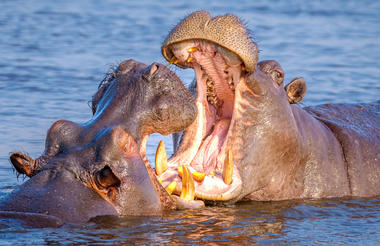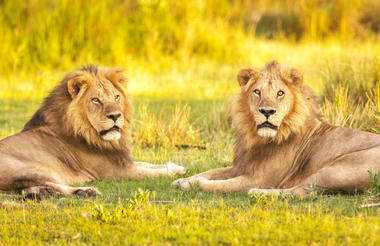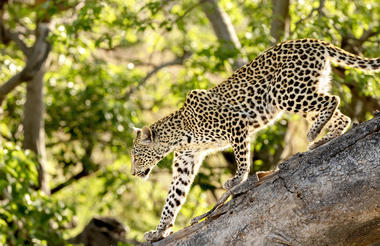The capital Windhoek (translated as “windy corner”) is the political, cultural, industrial and economic center of Namibia with 400,000 inhabitants. Windhoek was founded on October 18, 1890, when the foundation stone for what is now known as the “Alte Feste” fortress was laid. Other popular sites include the Tintenpalast, the Christuskirche, the Kaisergymnasium and the Heinitz und Sanderburg. The quiet and well-organized city with a colonial German touch, offers German restaurants and shops, a widespread use of the German language, the celebration of German customs (such as Carnival or Oktoberfest) - the German tradition is reflected everywhere. Even the beer is still brewed according to the German "Reinheitsgebot" (special purity law). Mixed with African traditions and roots, Windhoek offers a unique atmosphere and a relaxed lifestyle that makes the city so endearing.

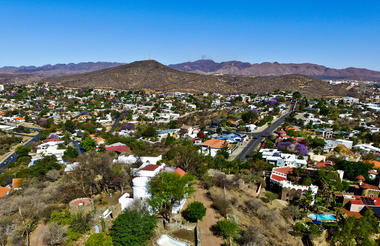
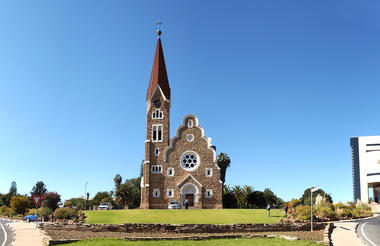
If you only have time to see one thing in Namibia, make it the soaring sand dunes of Sossusvlei. Few words can describe the towering red dunes spread across the landscape or walking amongst the fossilized Acacia trees in the vast white clay pan of Deadvlei. The ever-changing dunes are the arid lands most iconic feature, and hiking to the tops will allow you to view the Martian-like landscape below. Sossusvlei shows off its beauty by housing many plants and animals that have adapted to life in the dry, yet dreamy terrain. This natural wonder is a perfect example of Namibia's unspoiled desert landscape.

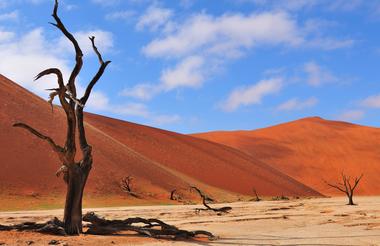
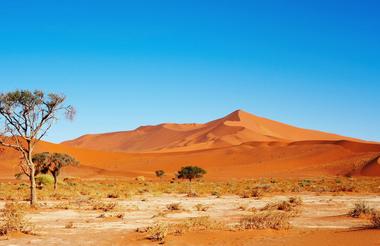
Nestled on the west coast of the Namib Desert - where the dunes meet the ocean - is the popular little town of Swakopmund. This laid-back area offers charm in bucket loads with its colonial architecture, quaint restaurants and historic landmarks - such as the "Mole" sunset pier. The cobbled streets and picturesque buildings indicate the rich heritage and culture this town holds, while the museums show its diverse history. This area radiates personality - from the more relaxed daytime charm to the vibrant atmosphere of the night - this is one of Namibia's hidden gems that need to be experienced.
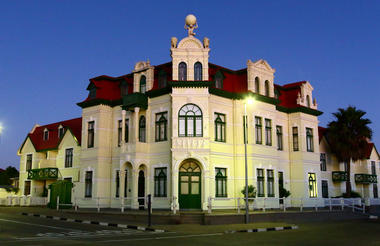
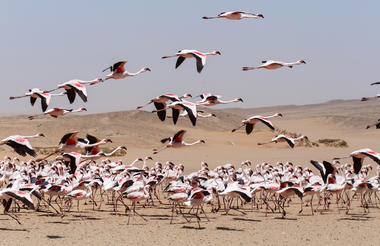

Twyfelfontein is a site of ancient rock engravings in the semi-arid region of north-western Namibia. This world heritage site is situated 100 kilometres from the ocean, where the scenery shifts from dry red sands to lush grassland. Drawn by the San People, the engravings show depictions of both human and animal tracks. Many of the impressions also depict animals that are no longer found in the area - including lion, zebra, kudu and even seals! Visiting these paintings, with their rich historical and cultural backgrounds, allows you to learn about the Namibian heritage and the San people's customs and beliefs.
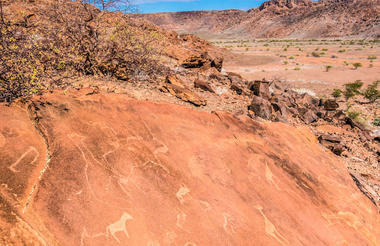
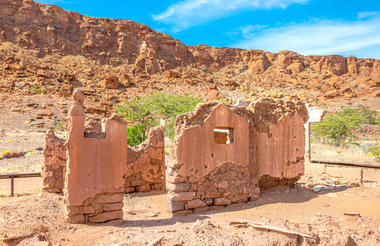
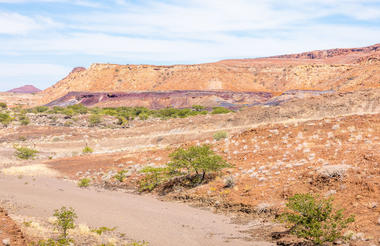
Featuring breath-taking panoramas, unforgettable sunsets, and abundant wildlife, Etosha National Park is Namibia's premier wilderness conservation area. The Etosha Pan - a shallow salt pan covering an area of 5.000 Square kilometres lies in the heart of the park. Natural springs are found in this dry terrain, making for excellent game viewing. Throughout the Park, the landscape is generally flat, with various habitats ranging from mopane woodland to wide, open, virtually treeless plains. Etosha is home to one of the world's most stable black rhino populations, along with lion, elephant, leopard, cheetah, and hyena.
Etosha's southernmost section is known for its rich population of both white and black rhino. Etosha South is home to the Okaukuejo Rest Camp, which is famous for its floodlit waterhole. The many viewpoints overlook picturesque bush-scapes and abundant wildlife. Getting into the South is accessible by Andersson's Gate. Here, visitors can expect to see many animals, including lion and the rare, black-faced impala. However, the most notable of animals found here are elephants. Enjoy guided nature walks, game drives, or simply watching the sunset from this breath-taking location.

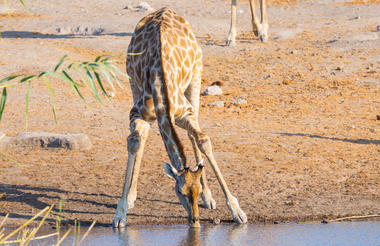
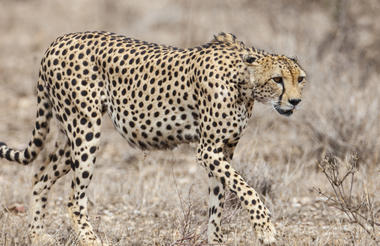
The Otavi Mountain Region is sometimes referred to as the "Golden Triangle", or as the "maize Triangle". Features of interest include the Hoba Meteorite and sink holes and underground lakes. The Hoba Meteorite is the largest meteorite in the world, and the largest naturally occurring piece of iron on the Earth's surface. It is made of nickel-iron and weighs about 60 tonnes. Lake Otjikoto and Lake Guinas are sinkholes the depths of which are not really known and nearby is the Dragon’s Breath one of the largest and deepest underground lakes in the world. It was here just outside Otavi that World War I ended in southern Africa on July 1 1915.

Located on the northeastern tip of Namibia - the rapidly growing town of Rundu is a central administrative and economic hub in the region. Renowned for its goat, millet and cattle farming, the boom of tourism in Rundu results from the town's easy accessibility. In many ways, woodcarving artefacts have become a symbol of the town. Visitors can purchase any number of wooden items, from cutlery and bowls to ornaments and animals. The small town of Rundu, with its flat plains and sandy roads, is a fun-filled stop-over for those travelling between Etosha, Windhoek and the Okavango Delta.

Rising in the central Angolan highlands and east of the Kunene River is the Kwando River, forming the boundary between Namibia, Angola and Zambia. This river is the lifeblood of this region, and its fresh grasses support large herds of animals, most notably the Burchell's Zebra. Activities in the area include boat cruises, guided bushwalks and game drives. The surrounding land is pristine, largely uninhabited, and its beauty remains relatively undiscovered. Soak up the charm of the river nestled beneath a canopy of shady jackalberry trees, or listen to the sounds of the hippo's grunt as your boat sails past.
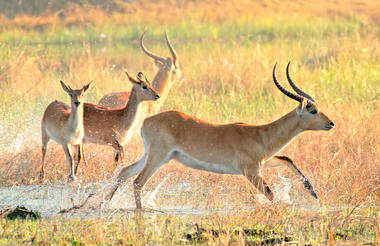
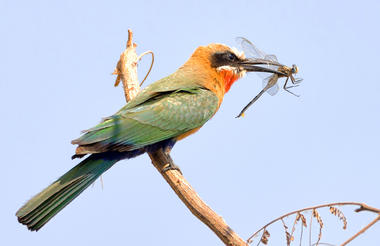
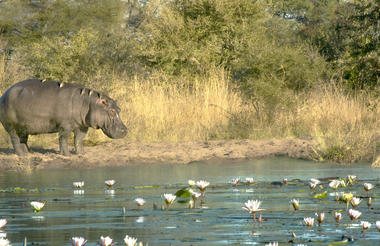
Victoria Falls is an awe-inspiring sight of beauty located on the Zambezi River, serving as the border between Zambia and Zimbabwe. The massive basalt cliffs over which the falls thunder transform the Zambezi from a calm river into rapids that carve their way through dramatic gorges. The falls have been designated as a National Park and World Heritage Site, and they are also one of the Seven Natural Wonders of the World. Visitors can enjoy activities such as swimming, bungee jumping, and zip-lining at the falls. Additionally, there are more relaxed activities available, including sunset cruises, walking tours, and interactions with elephants.
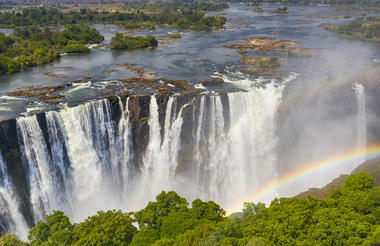
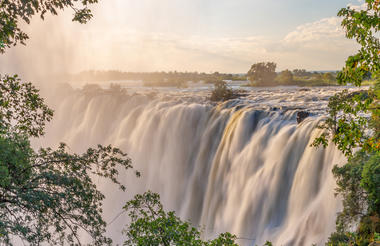
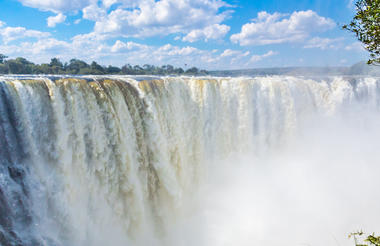
Situated on the edge of Kasane and bordering Zimbabwe, as well as the Nogatsaa area, lies the Kasane Forest Reserve. This area is characterised by dense vegetation and open grasslands, and Kasane serves as the gateway to Chobe National Park. Game viewing is most enjoyable in the early morning and late afternoon. Fishing, ferry rides, and village tours are just some of the options for exploring this region. Attractions in Kasane include Lake Liambezi, Kasane Hot Springs, Soboba Water Rapids and Recreational Park, and a Crocodile Farm. The site is affluent in wildlife, including elephants, buffaloes, and giraffes.

Nata is a village in Botswana's central district. It is located at a crossroads between routes leading north and west, making it a convenient stop-over for travellers heading to Maun. The village is surrounded by Mokolwane palms, and the river delta feeds into the Sua Pan, providing a peaceful retreat. Exploring the area in four-wheel drives to reach the salt pans is a fun activity. The bird sanctuary, home to 165 bird species including flamingos and pelicans, is a community project and a must-visit. Travelers have a variety of accommodation options including game reserves, lodges, hotels, and camping sites.

Gweta is in a small village in the Okavango-Chobe region of Botswana, generally considered the gateway to the Makgadikgadi Pans. It derived its name from the sound of croaking bullfrogs, which bury themselves in the sand until the rainy season arrives. Camping and upmarket lodging are both available. Many lodges offer guided tours and overnight camps on the salt pans, walks around the baobab trees, and a cultural visit to the local village. Activities of the area include game viewing, guided walks, and horseback rides. However, Gweta's gigantic Baobab trees are the attraction that leaves visitors speechless.

Moremi Game Reserve is a protected area in Botswana. It is found in the eastern parts of the Okavango Delta - home to one of Africa's richest ecosystems. The reserve homes the region's major herbivores and carnivores, and there have been recent reintroductions of Black and White Rhinos, making it a Big Five destination. Here, visitors can enjoy game-viewing in abundance and be amazed by the Delta's prolific birdlife. Explore this wildlife wonder by vehicle, foot, traditional mokoro, or horseback safaris. Boat cruises, elephant interactions, helicopter rides and walking safaris are all activities offered at Moremi.
